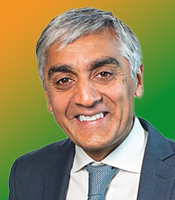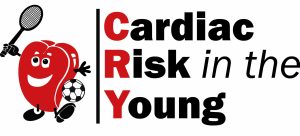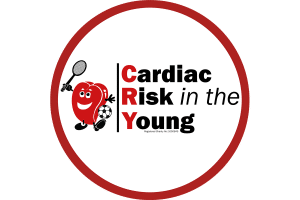“The aim of this comprehensive, up-to-date guideline, which includes numerous authors who are CRY (Cardiac Risk in the Young) physiologists, cardiac Research Fellows and senior CRY cardiologists, is to highlight the role of echocardiography in identifying athletes with potentially serious structural disease. Apart from describing several structural diseases implicated in exercise-related sudden cardiac deaths, such as cardiomyopathy, anomalous coronary origins, valvular heart disease, and myocarditis, the document provides a clear methodology for measuring cardiac dimensions accurately in athletes, describes the upper limits of cardiac dimensions due to regular exercise and the role of various demographic factors that influence these measurements. It is recognised that large male athletes engaging in endurance sports, such as long-distance running or cycling, may exhibit large ventricular dimensions, whereas male athletes of African or African Caribbean origin may demonstrate thickening of the heart muscle that overlaps with hypertrophic cardiomyopathy.
“Notably, the document provides evidence-based methods for differentiating large cardiac dimensions due to exercise from those associated with cardiomyopathy, thereby reducing the risk of false-positive results, which can have serious consequences.
“In addition to the contribution to the global interpretation of the athlete’s ECG, the importance of research funded by CRY in informing these guidelines cannot be overstated. Information relating to sudden cardiac death in sports originated from research funded by CRY. Professor Aneil Malhotra reported on the incidence and causes of sudden cardiac death in adolescent football players. Dr Gherardo Finocchiaro reported on autopsy findings in exercise-related sudden cardiac death in young athletes.
“A significant proportion of data about the upper limits of cardiac dimensions and the influence of age, sex, size, sport, and ethnicity was derived from cardiac projects conducted by former research fellows during their postdoctoral theses.
“For example, data relating to the upper limits of cardiac dimensions in adolescent athletes were reported by Dr Jayesh Makan and data associated with cardiac adaptation in athletes of African or African Caribbean origin were reported by Professor Michael Papadakis during his tenure as a CRY-funded Research Fellow, alongside Dr Joyee Basu.
“Dr. John Rawlins reported data on ethnic differences in cardiac dimensions in female athletes. Dr. Finocchiaro reported on specific left ventricular remodelling characteristics depending on sex and sporting discipline.”
Essential features to differentiate the athlete’s heart from cardiac disease were also obtained from research funded by the CRY initiative e.g.:
- Dr Finocchiaro reported on the role of mitral valve Doppler in differentiating physiological left ventricular hypertrophy from hypertrophic cardiomyopathy (link).
- Data relating to the right ventricle and methods for determining an enlarged right ventricle in arrhythmogenic cardiomyopathy with right ventricular predominance were derived from research conducted by Dr. Abbas Zaidi (link).
- Dr Sabiha Gati reported on the prevalence and significance of hypertrabeculation in athletes (link).
- The role of stress echocardiography in differentiating an athlete’s heart from dilated cardiomyopathy was conducted by Dr Lynne Millar (link).
- Following the COVID-19 pandemic, Dr Raghav Bhatia reported on pragmatic methods for identifying athletes with possible myocarditis after a viral illness (link).

Professor Sharma (who has served as CRY’s Consultant Cardiologist for almost 3 decades) concludes; “Cardiac Risk in the Young was proud to endorse the guideline, which will facilitate accurate interpretation of cardiac dimensions in athletes, minimising the chances of a false positive result and promoting safe exercise in this group while mitigating the risk of potential sudden cardiac death.”

Dr Steven Cox, Chief Executive of CRY said, “The publication of the new echocardiography guideline is such an important achievement – and something which CRY is both proud to have been involved with through our research and honoured to endorse. The accurate understanding of the ‘athlete’s heart’ has been at the core of much of CRY’s research programme over the past 30 years, underpinning one of our key missions to better understand how a fit and healthy young person could be at risk of a cardiac arrest and young sudden cardiac death.
“There have always been ‘grey areas’ when assessing the hearts of elite and grass-roots athletes, and so it’s fantastic that the new guideline has integrated the latest advances in scientific knowledge about these conditions.
“This represents a significant step forward in improving, streamlining, and standardising how we assess the hearts of young athletes using this vital diagnostic tool – and will play a crucial role in identifying risks early and helping to save young lives.”




